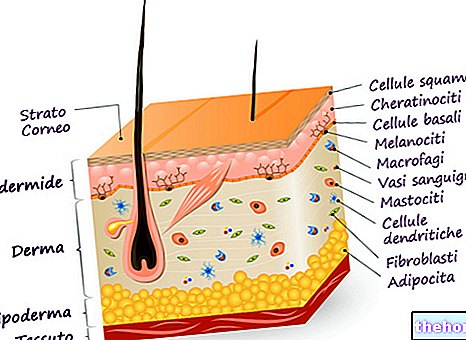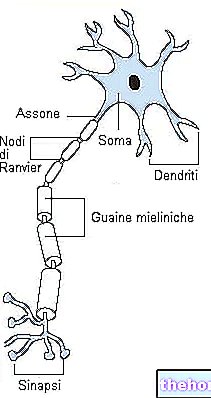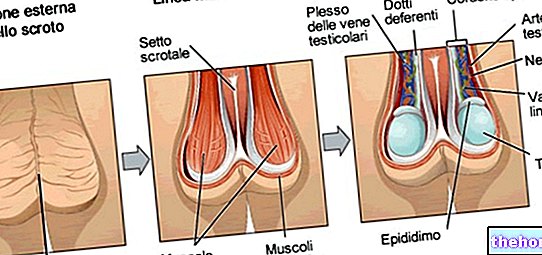«Kidneys and glucose
The amount of body water is regulated at two levels: the thirst center is located in the central nervous system (stimulated whenever we risk dehydration), while the second regulatory center is found in the kidney. The quantity of urine eliminated by the kidney is in fact proportional to the percentage of water present in the plasma and in the organism.
In Bowman's capsule 180 liters of filtrate flow per day, while in the final tract of the contiguous segment (proximal tubule) this volume drops to 54 liters / day. In this first section, important quantities of water are reabsorbed, as occurs in subsequent portions. Thanks to the effective reabsorption process, only one and a half liters of liquid per day (in the form of urine) comes out at the end of the collecting duct.
NEPHRON REGION
VOLUME OF LIQUID
OSMOLARITY "OF THE LIQUID
Bowman's capsule
180 L / day
300 mOsM
End of the proximal tubule
54 L / day
300 mOsM
End of the loop of Henle
18 L / day
100 mOsM
End of collecting duct (final urine)
1.5 L / day (average)
50-1200 mOsM
To understand how the kidney intervenes in the regulation of the water balance, it is necessary to consider a further factor, represented by the osmolarity of the liquid present in the tubules.
Osmolarity expresses the concentration of solutes in a solution, in our case in the liquid present in the tubular area. Osmolarity therefore depends on the total sum of the solutes (sodium, chlorine, calcium, glucose, amino acids, etc.) contained in the preurin.
The physiological liquids, present inside and outside the cells, have an osmolarity equal to 300 milliosmoles, which we also find in the filtrate present in the Bowman's capsule. At the end of the proximal convoluted tubule the volume of liquid is reduced but the osmolarity remains unchanged since the water follows the reabsorbed solutes and the ratio remains unchanged.
In the proximal tubule glucose, vitamins, amino acids, many salts and the little bit of proteins that have managed to pass are reabsorbed. Along the loop of Henle, on the contrary, not only the volume of the filtrate is reduced, but it significantly decreases. also osmolarity (-66%); consequently the solutes become less concentrated, or more diluted if you prefer.
At the end of the collecting duct, where the urine that will be eliminated is present, the osmolarity varies from 50 to 1200 milliosmoles; the urine, therefore, can be very diluted or particularly concentrated. The first case is found, for example, when a person drinks water in excess; urine will be rather concentrated when the subject is dehydrated.
In the interstitial liquid around the loop of Henle and the collecting tubule there are very concentrated solutions, with a very high osmolarity for the accumulation of solutes. Furthermore, the walls of the various sections of the nephron have different permeability to water and salts. The descending branch of the loop of Henle is permeable to water, which is then reabsorbed, but not to the solutes; for this reason the volume decreases and the concentration of the solutes increases. In the ascending branch of the loop of Henle the wall is impermeable to water, whose exit is therefore prevented, and has pumps capable of expelling salts. This system is particularly efficient, so much so that at the end of the loop we find a particularly diluted liquid (18 liters / day), ready to enter the distal tubule. From this stretch onwards the permeability of the tubular wall is actively regulated, based on the requests physiological, from a hormone called antidiuretic or vasopressin, whose name already makes us understand its action: this peptide, released from the posterior pituitary, is in fact able to reduce diuresis (elimination of urine).
Vasopressin is secreted whenever water is scarce, to inform the kidneys of the state of dehydration of the organism. In response to the hormone, the kidney actively intervenes and, by making the walls of the last sections of the nephron permeable to water, reduces the volumes excreted by increasing those reabsorbed. In the absence of vasopressin, a disease known as diabetes insipidus, the subject is forced to eliminate 18 liters of urine per day and, consequently, to consume at least twenty liters of fluids with the diet.

In the cells of the wall of the collecting duct there are receptors for vasopressin which, once bound to the hormone, favor the exposure of water channels (aquaporins) on the tubular membrane facing the interstitial lumen. In this way the " water can be recovered from the filtrate, pass into the blood and be retained by the body.
The hormone aldosterone, on the other hand, regulates the concentration of sodium, potassium and H +, recovering the first from the pre-urine and increasing the excretion of the other two.
Other articles on "Kidney and salt and water balance"
- Kidney and glucose reabsorption
- Kidney kidneys
- Nephron
- Renal glomerulus
- Glomerular Filtration - Filtration rate
- Regulation of glomerular arterial resistance



.jpg)












.jpg)











